
czjonyyy/Shutterstock
It’s November, and for most gardeners, the season for planting is over. But for others, planting in November is key to a spring garden bursting with color. Besides planning Thanksgiving get-togethers, some die-hard gardeners are planting the last of their spring perennials. That’s why it can be so disheartening when you put so much work into your garden only for deer to come along and treat your flower bed as a buffet. Not to worry — there are many lovely, deer-resistant perennials that you can plant this month for a beautiful spring garden. Besides lavender, allium, and daffodils, there are a variety of perennials that deer will avoid, ensuring none of your hard work will go to waste.
As gardeners, there are so many things working against us. Weather, disease, timing, and critters are some of the biggest things that can make gardening frustrating. At times it can feel like an uphill battle. But before you throw in your garden trowel, you should know that there are plants that can help you fight back (at least with one of those issues). Deer-resistant perennials are most commonly strong-scented, tough, rough-textured, or bitter. If planted near other garden plants, deer-resistant perennials might also keep other critters away. If you’re looking for a garden that won’t become a deer’s next meal in the spring, the perennials on this list are your best bet.
Daffodils
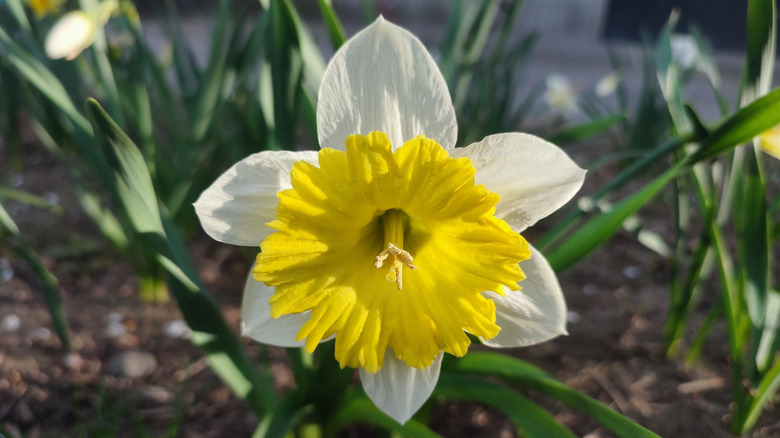
MarinaGrigorivna/Shutterstock
Daffodils (Narcissus) are a lovely spring bulb that can be planted in November that is deer resistant. Deer do not like to eat daffodils due to their lycorine content, which is bitter and toxic. They make a lovely border flower — especially the miniature versions. They enjoy full to partial sun and need well-drained soil. You can easily grow daffodils in USDA Hardiness Zones 3 through 9.
Snowdrops
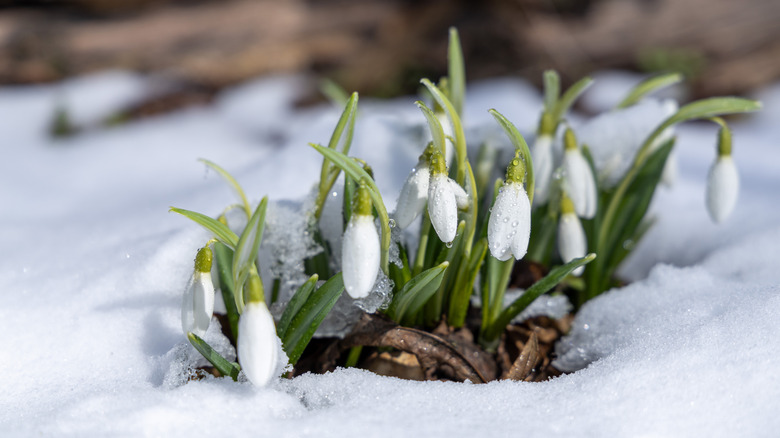
Equitano/Shutterstock
Not only are snowdrops (Galanthus spp.) adorable and bring hope of spring blooms even when there is snow on the ground, but they are also another perennial deer will not eat. These cute little flowers are some of the first to bloom in the spring, they do well in full sun, and they prefer well-draining soil. They thrive in USDA zones 3 through 7.
Poppies

vetre/Shutterstock
The poppy (Papaver) is an elegant flower that many gardeners love to add to their flower beds for a pop of bright color. Thankfully, they are not a favorite of deer. The milky sap that poppies expel is bitter, and deer will avoid it. Poppies are one of the easiest flowers to grow, making them a favorite among beginner gardeners. They enjoy full sun, well-drained soil, and do well in zones 3 through 8.
Crown imperials
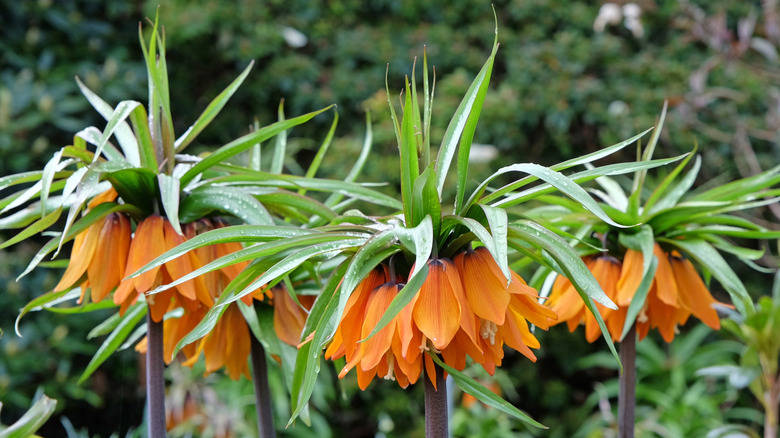
Alex Manders/Shutterstock
Crown imperials (Fritillaria imperialis) are repulsive to deer due to their strong, skunk-like odor. Deer, squirrels, and other critters tend to stay away from them because they believe there might be a skunk in the area. They are quite intriguing to look at, almost like a flower straight out of a Dr. Seuss book, though you might want to plant them on the far end of your garden if you don’t like the smell. Crown imperials are best suited to zones 5 through 8. For successful spring blooms, plant them in a warm, sunny location with well-draining soil.
Peonies

Birute/Getty Images
If roses are known as the “queen of flowers,” then peonies (Paeonia spp.) should be called the “princess of flowers”. These perennials are known for the vast variety of shapes and colors they come in. Thankfully, like many of the flowers on our list, deer find them bitter and unappetizing — which is wonderful for gardeners who want to have these beautiful blooms in their garden. They flourish in full sun, well-drained soil, and zones 3 through 8.
Coneflowers

Blake Snyder/Getty Images
Coneflowers (Echinacea purpurea), also known as echinacea, are a lovely perennial many people add to their herbal gardens. Fortunately, deer do not appreciate their strong odor and spiky center. They are a wonderful flower to keep on hand if you like herbal teas with medicinal benefits. Coneflowers do best in zones 3 through 8, in full sun to partial shade, and in well-draining soil.
Garlic

La Huertina De Toni/Shutterstock
The reason your co-worker avoids you when you’ve eaten garlic pasta for lunch is the same reason deer avoid garlic (Allium sativum). These animals do not like the strong sulfurous odor that comes from garlic, so this plant is capable of keeping away deer. Garlic is normally thought of as an annual, but you can plant it, leave some bulbs after harvesting, and it can continue to grow year after year. Garlic does best if grown in full sun, well-draining soil, and zones 4 through 9.
Lavender
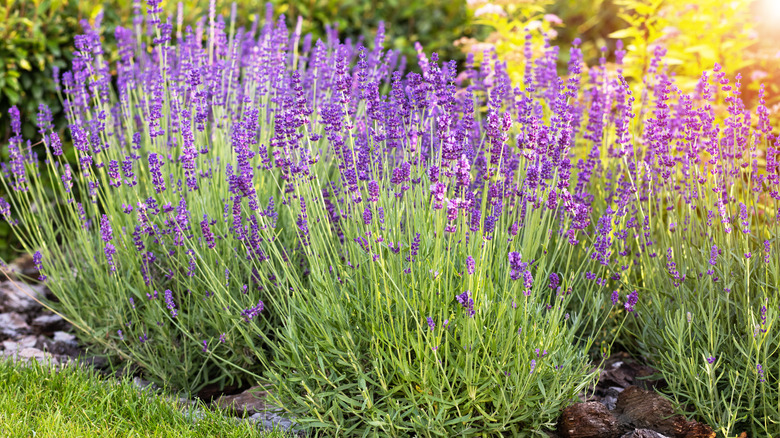
Katya Slavashevich/Getty Images
Like garlic, deer find the strong smell and taste of lavender (Lavandula angustifolia) extremely unappealing. The strong, camphorous odor from lavender ensures that deer will steer clear of your garden. This is one of many reasons planting this perennial in November is a great idea if you are wanting beautiful, purple blooms in your garden next spring. Lavender does best in zones 5 to 9, in full sun to partial shade, and in soil that has good drainage.
Alliums
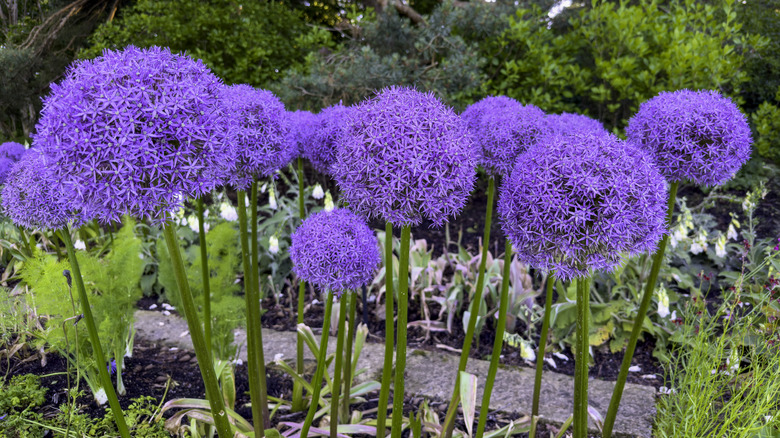
Patty_c/Getty Images
It’s understandable that ornamental onions, also known as alliums, would have similar effects on deer that garlic does. After all, garlic is a member of the allium genus. Deer absolutely despise the scent and the taste of alliums. These flowers are one you should disperse throughout your garden to keep deer from grazing the area. They have beautiful, giant blooms and make for a dramatic addition to any flower bed. They do best in zones 4 through 9, and like many others on this list, they enjoy full sun to partial shade and well-draining soil.
Bee balm
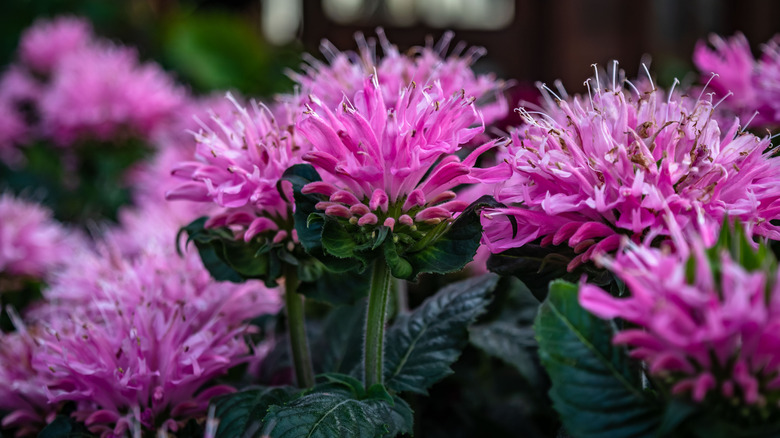
Fanni_2021/Shutterstock
Apparently, deer also do not like minty, fresh breath. Bee balm (Monarda) is another perennial that deer avoid because of its strong odor and taste. This plant is known for its minty-orange scent and flavor. It is also another great herbal plant to have in a medicinal garden. Bee balm does well in zones 4 through 9. It enjoys full sun, good airflow (to prevent powdery mildew), and soil that is moist but has good drainage.
Salvia

Catlane/Getty Images
Salvia (Salvia officinalis), also known as sage, is another plant on our list that deer avoid due to its strong scent. They especially avoid the black and blue variety of salvia. This plant is an herbaceous perennial that grows stems with tiny little flowers in a variety of colors. It is also another great plant to have in an herbal garden. They grow well in harsher conditions, like more arid regions, in full sun. They are a great plant if you live in zones 5 through 10.
Anise hyssop

Juriskraulis/Getty Images
Anise hyssop (Agastache foeniculum) is another perennial with a strong scent that deer avoid. This variety of hyssop has a strong, minty, herby, black licorice scent and taste. Like salvia, it has small flowers along a main stem that are blue to purple in color. Hyssop is a great plant to have in your garden for its many culinary uses. It does well in full sun to partial shade and in a variety of soil types. If you live in zones 4 to 8, you can plant this perennial in November for spring blooms.

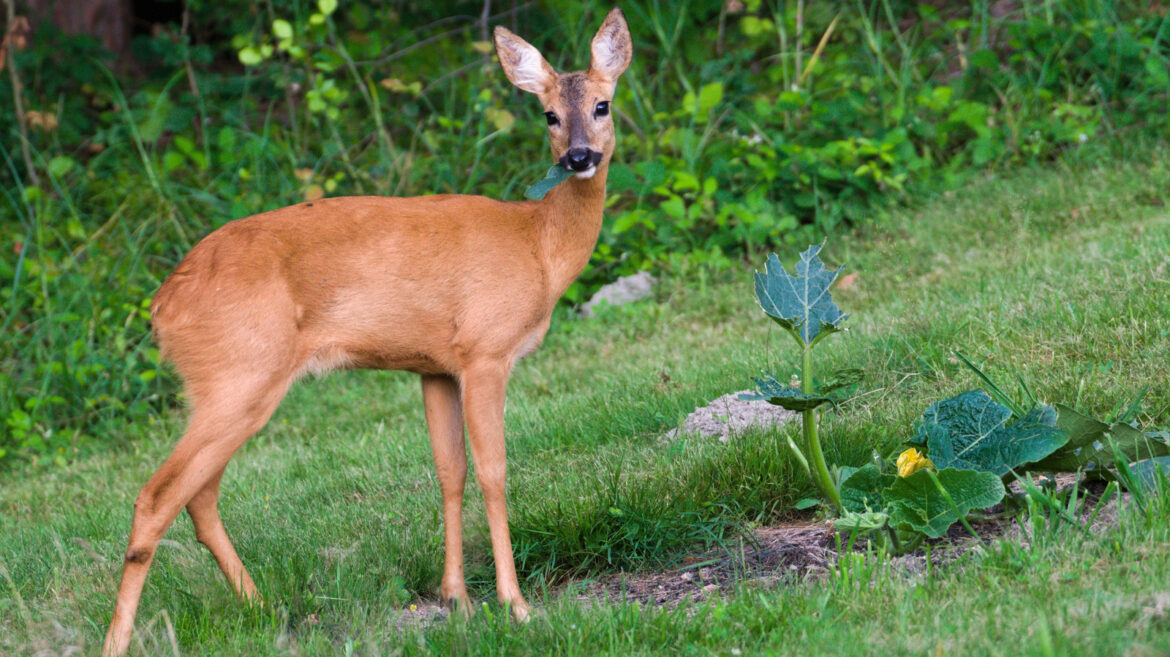
Comments are closed.